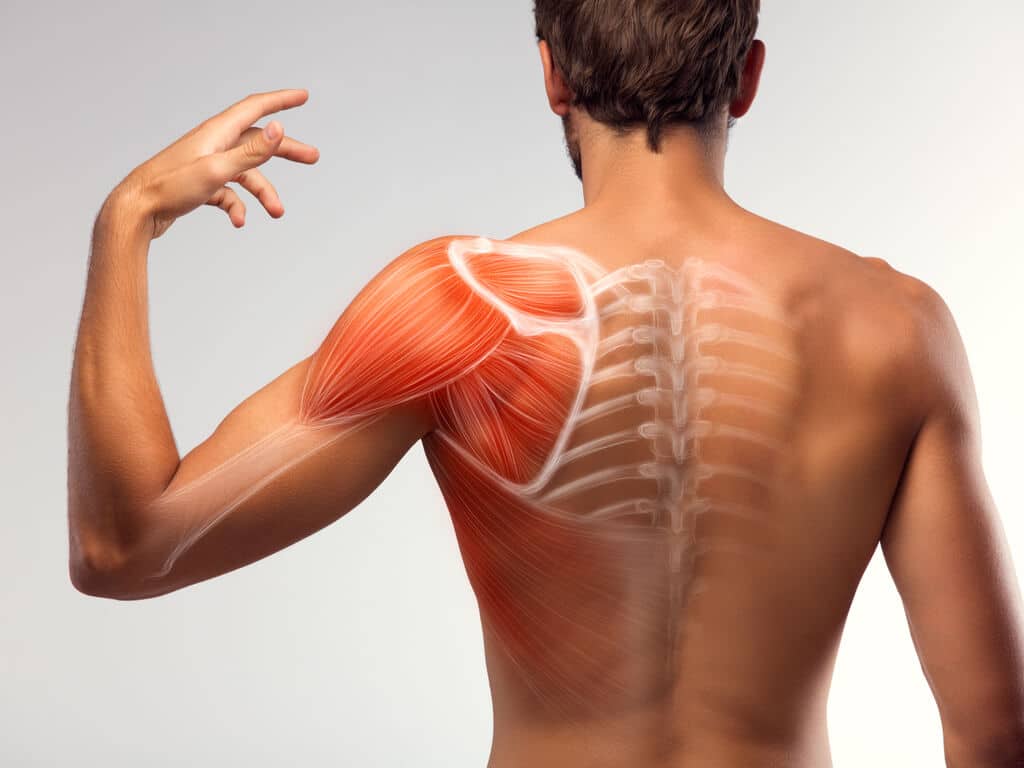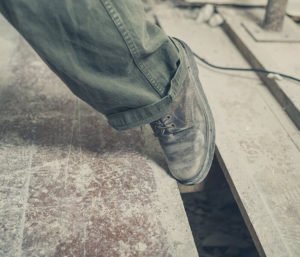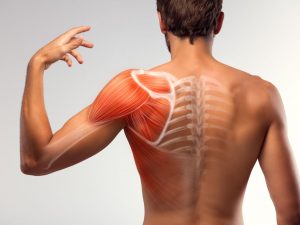What To Do In Case Of Rotator Cuff Accident In New York

- 1. Expert medical care should be sought right away
- 2. Muscles that help the shoulder rotator cuff perform properly when free of injury
- 3. Specific times you may suddenly suffer damage to your rotator cuff
- 4. Tests physicians often order to diagnose your shoulder/rotator cuff injuries
- 5. Treatment options can be quite varied – depending on the precise, damaged area
- 6. Post-surgery rotator cuff pain management
- 7. Rehabilitation following rotator cuff surgery
- 8. What size rotator cuff accident settlement award (or jury verdict) can you expect?
Shoulder rotator cuff injuries often happen due to falls at work, motor vehicle collisions or trip-and-fall accidents. Everyone must stay alert daily to avoid damaging this crucial part of our body that helps us perform our jobs, care for others, prepare meals, and simply groom ourselves. Once a rotator cuff is seriously damaged, you may have to endure multiple surgeries and lengthy rehabilitation therapies before you regain full or partial shoulder functioning again.
Contact our team at (212) 222-1111 for your free case evaluation.
Expert medical care should be sought right away
Once injured, always obtain immediate diagnostic care and treatment because if you don’t – you’ll likely suffer prolonged pain and other issues that can complicate your future recovery. Waiting can also make it much more difficult to document all aspects of your actual damages.
What follows is basic information about the structure of your shoulder area, the types of diagnostic tests you’ll need, as well as a description of some surgeries that may help you one return to work or other activities. Case settlement values are also discussed.
As your New York rotator cuff accident attorney will tell you, making an educated guess about the exact settlement amount you might receive must wait until you’re through with most treatments. And even then, it will depend on the extent of your past and future medical needs.
Muscles that help the shoulder rotator cuff perform properly when free of injury
There are four muscles that play important roles in helping all of us rotate are arms to perform specific functions.
- The subscapularis. This muscle is crucial for holding your upper arm bone close to your shoulder. It also helps you lower your arm, hold it straight out, and perform rotating movements.
- The teres minor. Although this is the smallest muscle that helps control the rotator cuff, it plays an important role in helping you move or rotate your arm in an outward fashion.
- The supraspinatus. This muscle helps you keep your humerus bone in proper alignment. It also makes it possible for you to maintain upper arm stability — and to lift your arm up.
- The infraspinatus. We each depend on this key muscle to help us both extend and rotate our shoulder area.
Once any of those muscles are damaged, pain and shoulder immobility can greatly complicate every day of your life. Hopefully, you’ll receive proper treatment and heal.
Specific times you may suddenly suffer damage to your rotator cuff
During an informative YouTube video, one of our New York shoulder injury attorneys describes how several New York plaintiffs suffered serious shoulder damage. These and other case descriptions below can help you better understand all the many ways you can suddenly develop a rotator cuff injury.
- Bus accident survivor. While riding a city bus, a New York City woman was standing up and holding on to a strap to steady herself. Once the bus got into an accident, the woman was thrown to the floor, causing her to suffer serious shoulder and other injuries.
- A worker falls off a construction site scaffold. Even very careful employees sometimes lose their footing, especially when required to keep working in wet weather. All regular construction, demolition, and refurbishing work on buildings is very risky. Too many New York City workers regularly harm their shoulders due to terrible falls – and the repetitive arm movements demanded by their jobs.
As you can now imagine, once injured parties start to fall forward, they may instinctively try to brace their falls — thereby suffering serious rotator cuff injuries. Each year, grocery store visitors suffer countless falls, resulting in a wide range of major bone fractures and shoulder injuries.
Tests physicians often order to diagnose your shoulder/rotator cuff injuries
- X-rays. Although these do not provide any conclusive information about rotator cuff injuries, they do let doctors know if arthritis and other problems may be adding to your current pain and other symptoms.
- The radio waves used by these tests provide clear images of all your shoulder’s basic structures.
- These imaging tests help by providing a detailed look at all your shoulder’s soft tissues, including the muscles and tendons. Doctors often find it very useful to compare the bone structure in the damaged shoulder with the one not currently causing you any pain.
Of course, your initial physical exam is also very important since it allows your doctor to ask you to move your arm and shoulder in a variety of different ways. This can often help pinpoint the most painful areas and range of motion issues.
Treatment options can be quite varied – depending on the precise, damaged area
- Conservative approaches. Although our clients rarely benefit from these due to the severity of their pain and damage, some people do not require surgery. They can be greatly helped with extensive rest, not using their shoulder area, and applying ice to painful muscles. Physical therapy sessions – along with ongoing exercises at home, may prove adequate. A good physical therapist will always choose the exercises most likely to restore strength and flexibility, without perpetuating your pain.
Steroid injections. Should your pain be severe and greatly interfere with your sleep or daytime work and other activities, shots can provide temporary relief. However, they should be provided with great caution since they can weaken the tendons near the rotator cuff – possibly lowering your chances of successful shoulder surgery in the future.
- There are several specialized forms of surgery that can help improve the functioning of your rotator cuff. Here’s a summary of several of them.
- Arthroscopic tendon repair. Surgeons make use of a tiny camera and tools that are inserted through small incisions – these allow them to reattach (or stitch) your torn tendon to the bone. If there is only a partial tendon tear, the doctor may just need to use a smoothing or trimming procedure known as debridement. Some doctors refer to this type of procedure as a mini-open repair.
- Open tendon repair. A larger or traditional incision (perhaps several centimeters long) is often made during this type of operation. This sometimes makes it easier to reattach a damaged tendon to the bone. If a tendon is greatly damaged, it may be necessary to use a nearby tendon – and attach it to the humerus bone. While this surgical approach was the norm for decades, less invasive procedures have become more prevalent in many settings.
Fortunately, most of these procedures do not require overnight hospital stays. However, some patients may have sustained additional shoulder damage, such as a biceps tendon tear. When that happens, those other injury repairs will have to be scheduled at a separate time.
Contact our team at (212) 222-1111 for your free case evaluation.
Post-surgery rotator cuff pain management
While pain medications can be given to you following surgery, this must be done carefully since some of these drugs are highly addictive. They may include opioids, NSAIDs (non-steroidal anti-inflammatory drugs, as well as local anesthetics.
Rehabilitation following rotator cuff surgery
Once your more intense pain after a rotator cuff operation diminishes, you will probably be advised to practice shoulder immobilization. During that time, as your shoulder heals, you may be asked to wear a sling, to help you to remember to not move your arm. This period can last for roughly four to six weeks, depending on how serious a tendon tear you’ve suffered.
Passive exercises. Your physical therapist will usually first assign some passive exercises since your arm muscles will often remain weak for quite some time. Slowly, you will be shown simple ways to try and increase your shoulder’s range of motion. During these movements and stretches, the therapist will often support your arm as you move it as directed. These passive exercises are often started within four to six weeks after your operation.
Active exercises. After about six weeks of the passive exercises, you should be able to perform carefully chosen active exercises, that won’t require your therapist to support your arm as you do them. Finally, after about eight to twelve weeks, you should be ready to try some arm strengthening exercises.
Goal of complete recovery. This often takes many months. After you’ve completed six months of assigned exercises, you should have regained at least a basic, functional range of motion and strength level. Most patients will eventually report much less pain — and greater flexibility — in their shoulder area over time.
What size rotator cuff accident settlement award (or jury verdict) can you expect?
As you might guess, the extent of your injuries, your documented pain and suffering, and the length of time it may take for you to fully (or even partially) recover are critical factors in making an educated guess. Your New York rotator cuff accident lawyer must also wait until most of your initial treatment has ended, so we can carefully analyze all of your medical records, and find out your main physician’s prognosis regarding your future needs.
All of that being acknowledged, here are some generalized case results involving shoulder and rotator cuff settlement (or verdict) awards. While our firm cannot guarantee any of them, we can say that you are likely to recover an amount somewhere near – or between — these figures. Yet, a difficult insurance claims adjustor might only offer close to $40,000. So much depends on the treatment recommended and pursued.
- $75,000. While parked at a stop sign, the plaintiff was rear-ended. Due to the extent of the rotator cuff damage and surgery – and the injured party’s ongoing extreme anxiety, this approximate sum was awarded.
- $600,000. The plaintiff was hit at an intersection while preparing to make a lefthand turn. The vehicle driven by the defendant was traveling at an excessive speed for the area. Rotator cuff damage was involved. Important note: The parties, in this case, chose to go into arbitration – which greatly increased the sum awarded.
- Just over $500,000. A car accident was so severe that the plaintiff was left unconscious. Also in this case, the rotator cuff damage was bilateral — suffered in both shoulder areas. The defendant’s fierce opposition to this fair sum was overcome. Experienced attorneys can always help you obtain the highest available sums.
We work as hard as possible for every plaintiff and our firm’s own results bear out this claim.
If you have suffered a serious rotator cuff injury in an accident caused by someone else’s negligence, you need to contact our New York rotator cuff accident law firm. We will carefully investigate all the facts of your case, review all your medical records, and then fight hard to win the maximum compensation available to you. We want every client to fully recover for all lost wages, pain and suffering, medical expenses, and other losses.
Contact our team at (212) 222-1111 for your free case evaluation.





 Steroid injections. Should your pain be severe and greatly interfere with your sleep or daytime work and other activities, shots can provide temporary relief. However, they should be provided with great caution since they can weaken the tendons near the rotator cuff – possibly
Steroid injections. Should your pain be severe and greatly interfere with your sleep or daytime work and other activities, shots can provide temporary relief. However, they should be provided with great caution since they can weaken the tendons near the rotator cuff – possibly